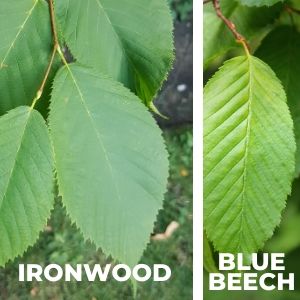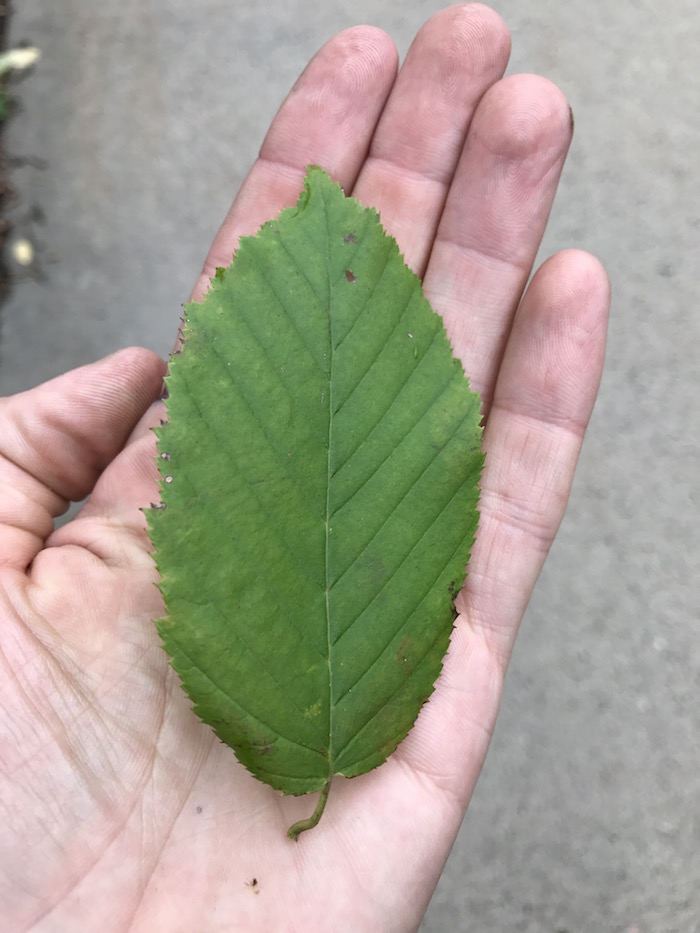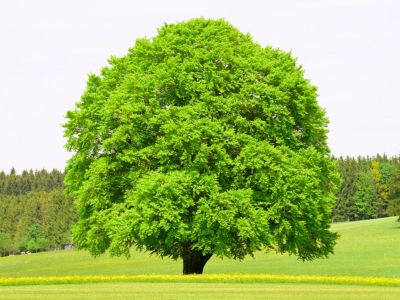blue beech tree facts
Due to its resemblance to beech trees the tree also goes by the name blue beech. Size range Medium tree 25-40 feet Large tree more than 40 feet Mature height 40-60 feet.

American Hornbeam Natural Resource Stewardship
Has an oval to rounded form.

. The small nuts are surrounded by a leaf-like bract becoming brown in late fall and hanging in clusters. Foliage Deciduous seasonally loses leaves Native locale Non-native. The beech tree will grow to be a large tree however the growth is slow.
It also has the name water beech because it often grows next to rivers and streams. What it looks like. The blue beech can generally be found growing in Eastern North America.
Commonly found in NE Iowa. New leaves emerge reddish-purple transforming to dark green and then turn striking shades of yellow orange and red in fall. Bluish-gray bark with fluted appearance of wood.
They can grow 80 feet in height and their branches can be over 40 feet long in span. It is a versatile tree often used in parks golf courses acreages and the forestry industry. The Blue Beech does well in shady moist areas and can make up a large part of the understory in some forests partially due to the unpalatable.
20 to 35 feet. Hornbeam Carpinus caroliniana is an attractive small tree that is common but not abundant in its natural range. In Southern Ontario it grows as an understory tree in the Carolinian forest in spaces between taller trees utilizing the sunlight filtering through the canopy.
Featuring smooth steel-gray bark beech trees are deciduous ornamental and timber trees that are native to subtropical and temperate climates in the Northern Hemisphere. Blue Beech - Carpinus caroliniana. 11 rows While distributed throughout much of Minnesotas eastern deciduous forests Blue Beech is by no.
The foliage transforms throughout the season offering a kaleidoscope of color. The blue beech tree has several unique features which are mentioned below. Blue beech may also be known as musclewood for its muscle-like ridges on the smooth-gray trunks and if often confused as a small beech tree.
Blue beech because of its very smooth gray bark and musclewood referring to its muscle-like branches which are irregularly fluted. Flowers appear in spring in separate male and female catkins with the female catkins giving way to distinctive clusters of winged nutlets. Grows on moist rocky wooded slopes.
The American beech is not a tree you plant for fast growth and quick shade this slow grower is planted for. The tree is perhaps best known for its smooth and sinewy steel-gray bark and the muscle-like look of its maturing trunk and larger branches thus one of its common names. Some exceptions have been noted to this observation.
Funny how one tree can have so many slang names Just thought that was interesting and notable if there were regional differences in the nickname Ironwood for two different species. It is very shade tolerant and commonly grows on lower slopes along streams and lake shorelines. It is a small tree 20 to 40 feet tall with a trunk diameter of up to two feet.
20 to 25 feet wide and 20 to 35 feet tall. American hornbeam also known as musclewood or blue beech is a small slow-growing understory tree native to hardwood forests of the eastern US and Canada. Commercial use of hornbeam wood is not practicable however due to the limited amount of wood per tree.
Tree or plant type Tree. 1 Pollinated by wind beech trees are related to oaks and have allergenic pollen that is. The crown is rounded and the trunk is often short and crooked.
The leafy bract attached to the paired fruits is very distinctive and the winter buds tend to be. Kathie Spitzley September 3 2015 312 pm. Blue Beech also commonly known as American Hornbeam is a very small tree but the extremely dense and hardy wood is so strong and difficult to crack that early pioneers used it to make bowls and plates.
It has many common names the most common include. Leaves are bluish-green with fine teeth and becoming successively larger along the shoots. The beech tree is deciduous tree that is native to Asia North America and parts of Europe.
The Fagus subgenus has one sturdy trunk that sports grayish bark. 20 to 35 feet. The smooth gray bark over an irregularly ridged trunk suggests a muscled limb thereby providing the basis for one of its common names musclewood.
A blue beech tree is short typically averaging around 20 to 35 feet and has a spread of similar size. Part shade to full shade. Blue Beech is a beautiful ornamental tree with enticing features.
Dark green in summer and change to colorful tones of orange red and yellow in. The smooth gray trunk and larger branches of a mature tree exhibit a distinctive muscle-like fluting that has given rise to another common name of musclewood for this tree. Other common names for the tree include musclewood or ironwood due to the strength of its wood.
The tallest blue beech tree was recorded to be 75 feet tall with 216 inches in diameter at the breast. Typically grows 20-35 tall. The extremely hard wood of this tree will as the common name suggests take a horn-like polish and was once used by early Americans to make bowls tool handles and ox yokes.
We also refer to Musclewood as Blue Beech. The bark is bluish-gray thin fairly smooth and heavily fluted. American hornbeam blue beech musclewood ironwood water beech.
The simple alternate leaves are more or less doubly toothed or at least the teeth are often of various sizes giving an irregular appearance. The formal and stately American beech holds a special place in many hearts. It is an understory tree that rarely grows much higher than 20 feet in the wild and often grows in clumps of several trunks.
Mature width 30-40 feet. Light exposure Full sun 6 hrs direct light daily Partial sun shade 4-6 hrs light daily Full shade 4 hrs or less of light daily. The wide-spreading canopy provides great shade in the summer and beautiful bronze coloring in the fall.
When the spring arrives you will notice the buds on the beech trees opening out into deep emerald-green leaves. Leaves drop in fall. Blue beech is widespread throughout Illinois in.
The American hornbeam has bluish-gray bark. It is found in north-facing bluffs rich woods at bases of bluffs rocky slopes along streams ravine bottoms low wooded valleys and moist woodlands. Blue beech is also referred to as American hornbeam or musclewood.
It grows very tall and has a smooth grey-blue bark.
Carpinus Caroliniana Blue Beech Minnesota Wildflowers
Carpinus Caroliniana Blue Beech Minnesota Wildflowers

Carpinus Caroliniana American Hornbeam Blue Beech Hornbeam Ironwood Musclewood Muscle Wood Water Beech North Carolina Extension Gardener Plant Toolbox

Ironwood The Inconspicuous Tree Leaf Local Enhancement Appreciation Of Forests
Carpinus Caroliniana Blue Beech Minnesota Wildflowers

Need A Tree For A Shady Space Think Blue Beech Clc Tree Services

I Spy Something That Is Blue Leaf Local Enhancement Appreciation Of Forests

